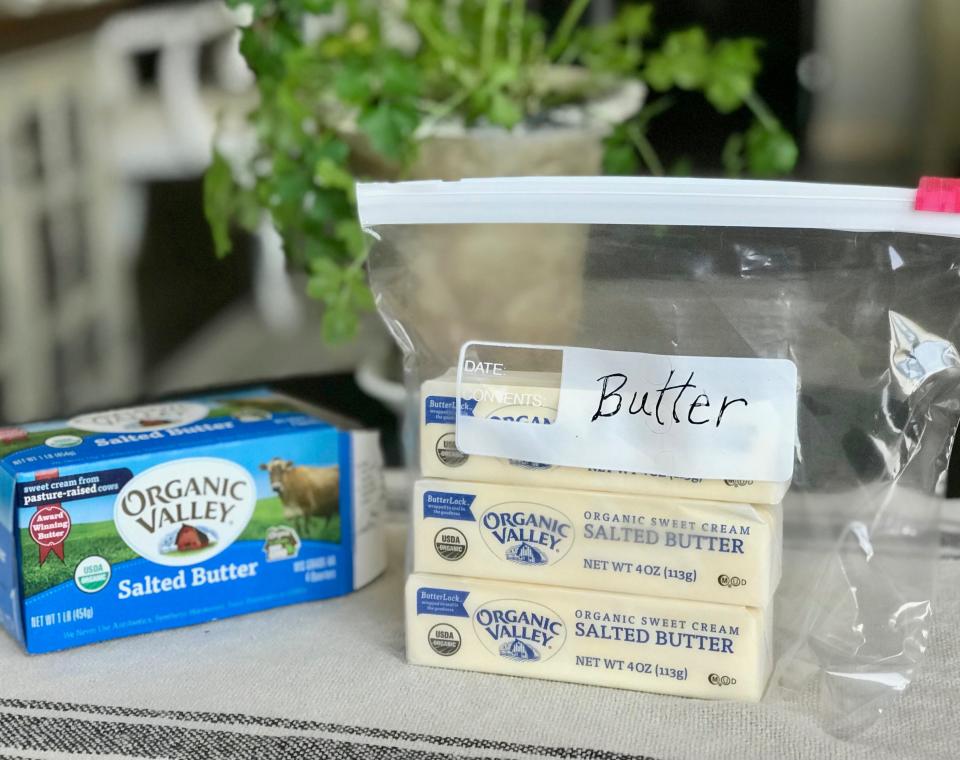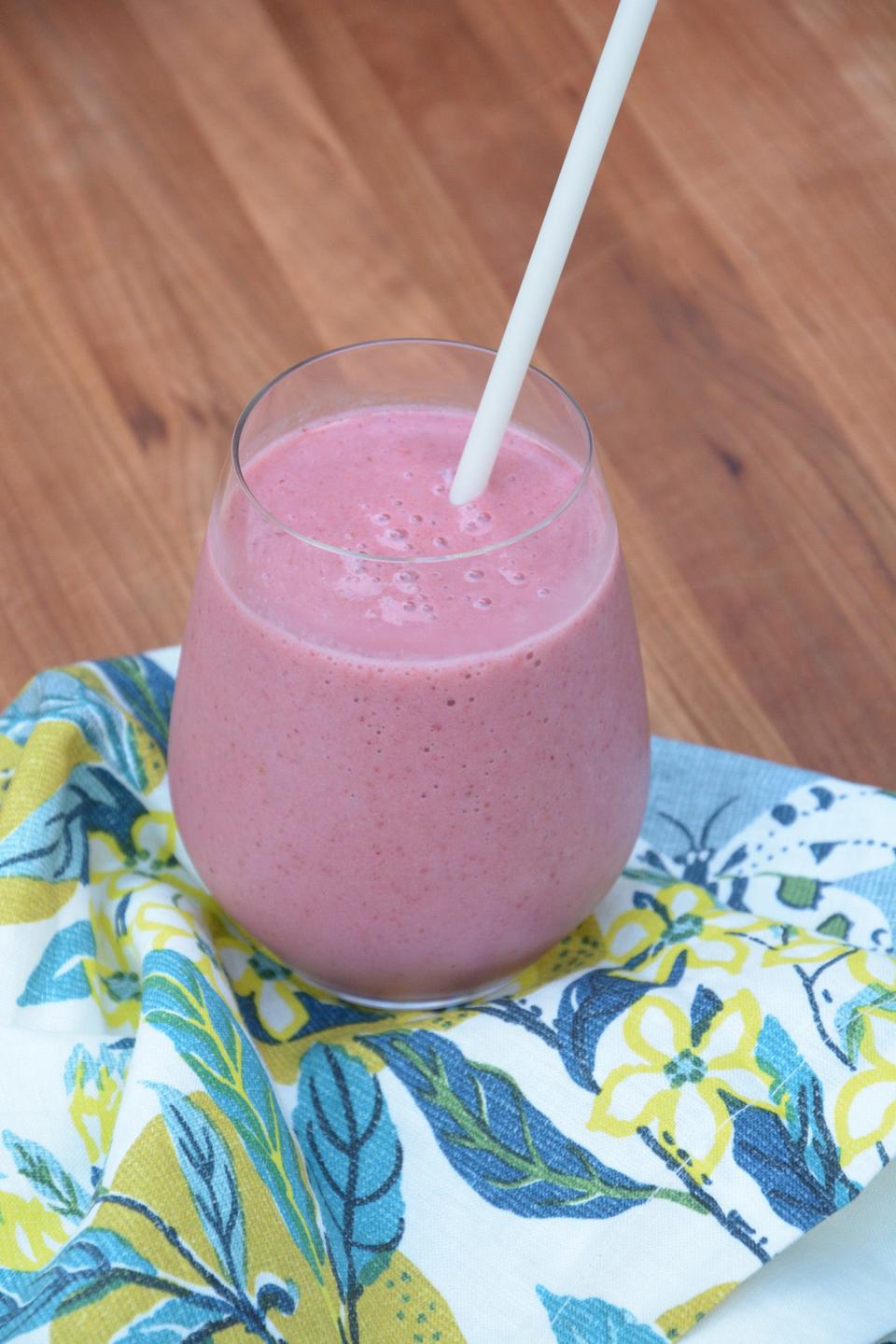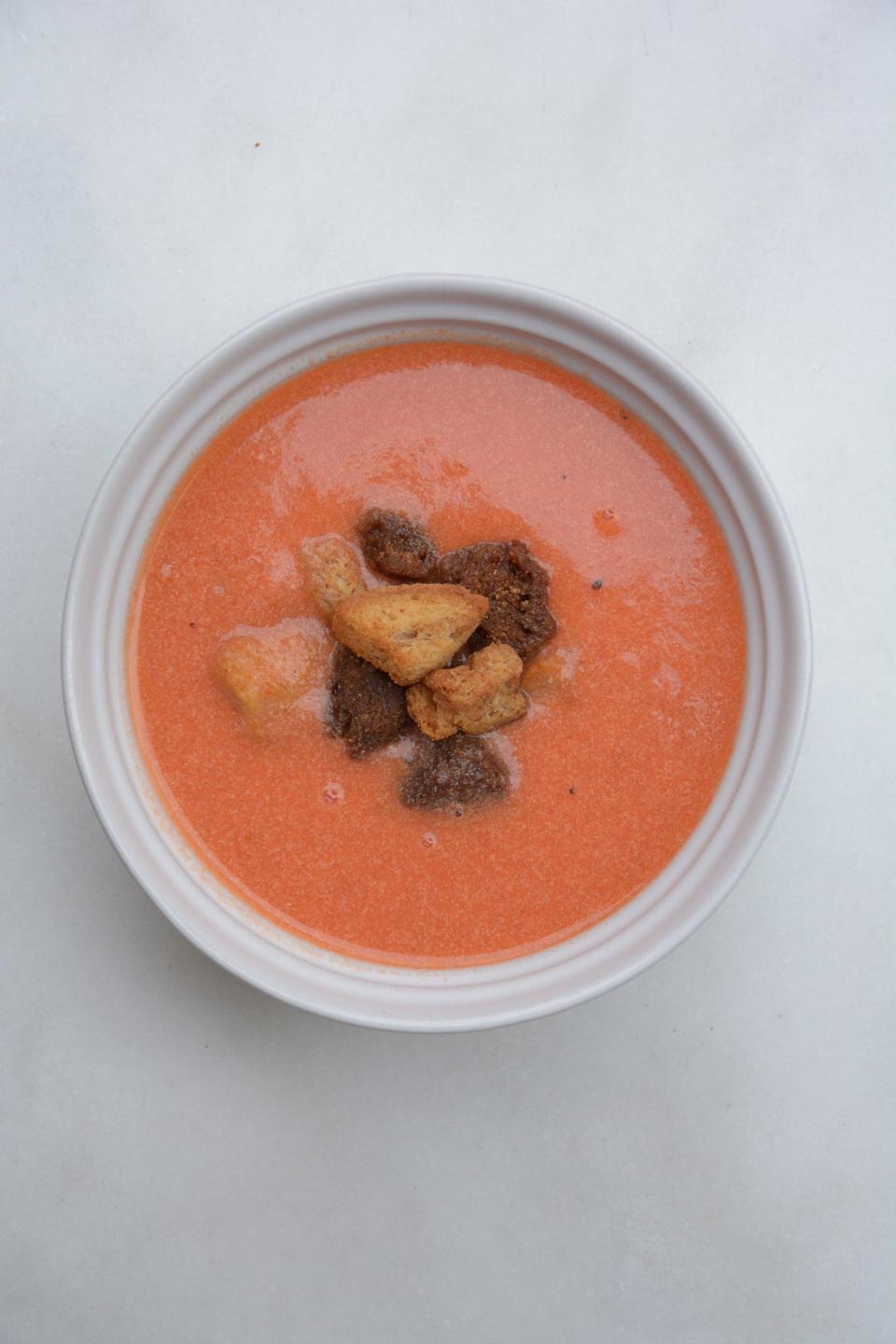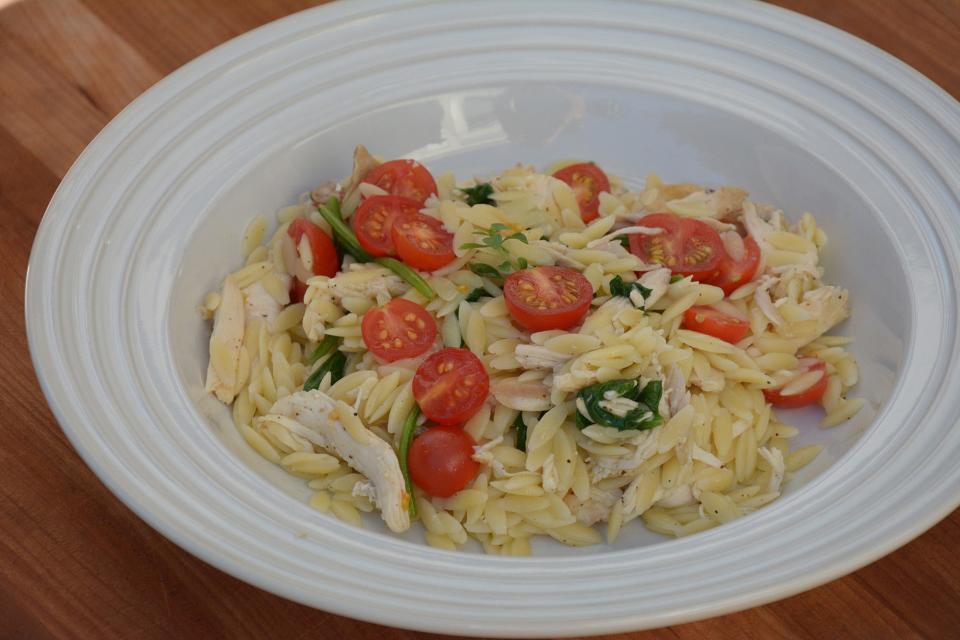Living with lactose intolerance in the land of milk and cheese? It's possible

Shorewood native and current Pittsburgh resident Emily Niemuth grew up eating all the typical Wisconsin foods, from milk and cottage cheese to ice cream and sour cream. It wasn’t until she turned 20 that her diet became an issue.
“I had lost a bunch of weight, and every time I ate I would feel sick and I had no idea why,” Niemuth says.
Three months later, after she endured a colonoscopy and tried a bunch of different medications, doctors diagnosed her with lactose intolerance.
For the first year she cut out dairy except for an occasional indulgence when she took a Lactaid pill, an enzyme supplement that makes foods containing lactose easier to digest. Then she learned how to handle dairy again, always in moderation.
“For those first few years I would take the cheese off of pizza because I couldn’t handle it, now I can, as long as the pizza doesn’t have a ton of cheese on it.”
She can have most dairy items as long as the portion is small enough, she said. But she also buys lactose-free milk, cheese and ice cream.
In the land of milk and cheese, what’s a person to do when they’re suffering with lactose intolerance? Bite the bullet and deal with tummy troubles or sulk in the corner eating kale and a chicken breast?
It is possible to enjoy food — and Wisconsin’s favorite foods, at that — if you know how.

A dairy researcher finds a way
As someone who’s a registered dietitian who also works in the dairy field, it’s ironic that Andrea Miller deals with lactose intolerance herself. She's a registered dietitian and outreach program manager for the Center for Dairy Research at the University of Wisconsin-Madison.
“I eat a ton of dairy — more than I used to,” she says. “I have Greek yogurt every day, I do ultra-filtered milk in my coffee, and I put on mascarpone or cream cheese if I do waffles.
"It’s being aware of how your body reacts and using products a little different.”
One tip she has is combining dairy with other foods. People will often tolerate milk combined with a high-fiber cereal much better than a glass of milk alone. Additionally, 2% or whole milk may be tolerated better since both fiber and fat slow down digestion and allow for better absorption of nutrients, including lactose.
“For most people, cultured products as a whole will digest and absorb well because of what they contain (natural enzymes) and the fact that lactose has been eaten up in the process of culturing,” she says.
Examples of cultured foods include buttermilk, kefir, yogurt and cheeses that are made with cultured milk.
Misconceptions about lactose intolerance
“The biggest misconception about lactose intolerance is thinking you can’t consume dairy products or anything that says ‘milk’ on the back of the ingredient list,” Miller says.
That’s because a lot of people think lactose intolerance is the same thing as having a milk allergy. In actuality, these conditions are completely different.
Between 30 million and 50 million Americans (adults and children) have lactose intolerance, according to Children’s Wisconsin.
“It’s the body’s inability to properly digest lactose, or milk sugar,” Miller says. A milk allergy is an abnormal immune system response to milk and milk products related to the protein in milk.
However, an allergy is easier to identify.
“There are a lot more variables with an intolerance. It’s more subjective because you’re going off of symptoms.”
Symptoms can include everything from bloating and gas to nausea and diarrhea. But it ranges from person to person, and different people can handle different amounts of lactose. It’s very personal.
Although people with lactose intolerance can cut out all dairy to avoid symptoms, they don’t have to.
“It’s sad because (cutting out dairy) leaves out so many foods and cuts out so much nutrition,” Miller says.
Simple swaps of Wisconsin favorites
Miller says most people with lactose intolerance can’t tolerate conventional fluid dairy milk. But a simple substitution is a dairy milk that is lactose-free or one that’s ultra-filtered, such as Fairlife.
Most cheese is very low in lactose because most of the lactose is removed during processing. Also, when cultures are added or when cheese is made with cultured milk, it adds to the digestibility of cheese.
People tend to tolerate harder cheeses, like cheddar, better, Miller says. Some cheeses are also lactose-free; Briette’s brie cheese is one example.
Heavy cream is often used in soups and sauces to give it a creamy texture. Miller has found that crème fraiche is a great substitute for her because it’s a cultured product. “It’s not lactose-free, but I can tolerate it much better.”
For those who can’t handle any real ice cream, Beckon is a lactose-free product that’s made with real milk and cream.
Miller says she’s able to tolerate real ice cream because the high fat content slows down digestion (versus ice cream that’s made with milk and not cream), but she still keeps her consumption down to a half cup. “My body tells me this is the last bite.”
Dairy and cow butter is very low in lactose since it’s almost all fat. Ghee is another great option since it’s even lower in lactose than traditional butter because the dairy solids are removed in the clarifying process. Because of this, only someone with a milk protein allergy would need to avoid butter.

Alysha Witwicki is a freelance writer living in Whitefish Bay. Contact her at alyshawitwicki@hotmail.com
*****
What to eat when you’re lactose intolerant
Here's a sample daily menu for those dealing with lactose intolerance.
Breakfast
Greek yogurt with granola and fruit
Mixed Berries and Banana Smoothie
Avocado toast with pickled onions and capers
Mascarpone and jam on a whole-wheat English muffin
Lactose-free cottage cheese with sliced peaches
Lunch
Homemade Garden Tomato Soup
Tuna salad wraps with tomatoes and spinach
Roasted turkey sandwich with a slice of cheddar cheese, honey mustard, lettuce and tomatoes
Thai pasta with spicy peanut sauce
Black bean and corn quinoa salad with a sprinkling of cotija cheese
Dinner
Lemon Chicken with Orzo
Pasta with marinara sauce, grilled shrimp, vegetables and a sprinkling of Parmesan or bandaged cheddar cheese
Grilled fajitas with steak, peppers and onions
Spring rolls with chicken and vegetables
Salmon and spinach salad with avocado
For people with lactose intolerance, a trick to getting your dairy without the digestive trouble is combining it with other foods to slow the process. This smoothie from Food Network is a great example.

Mixed Berries and Banana Smoothie
Recipe tested by Alysha Witwicki
Makes 1 serving
1 cup frozen mixed berries
1 frozen ripe banana
½ cup low-fat vanilla kefir or Greek or Icelandic yogurt
¼ cup orange juice
1 teaspoon honey
Combine all ingredients in a blender and puree until smooth.
*****
*****
This is the perfect recipe to make when tomatoes are in season. With the addition of lactose-free milk, it’s still creamy and fresh — everything you’d want in a tomato soup. This recipe is adapted from ehow.com.

Homemade Garden Tomato Soup
Recipe tested by Alysha Witwicki
Makes 8 servings
9 large tomatoes
1 cup unpacked basil leaves
3 tablespoons olive oil
1 large onion, diced
4 tablespoons flour
1½ cups lactose-free milk
Croutons or crusty bread for garnish
Fill a large stockpot with water and bring to a boil on the stove. Cut the stems from the tomatoes, and once the water is boiling, submerge half the tomatoes in the water and let them roll around for 1 minute. Transfer the tomatoes to colander in the sink and spray with cold water. When the tomatoes are cool enough to handle, peel the skins off. Repeat with remaining tomatoes.
Halve the tomatoes and put them in a food processor or high-powered blender (do this in two or three batches if necessary). Puree until there are no chunks left. Pour the tomato puree into a large bowl and set aside.
Put the basil in the food processor and grind as finely as possible. Add ¼ cup of the tomato puree and keep blending. Pour the basil and tomato puree into the large bowl with the rest of the tomato puree.
In the large stockpot, heat the oil over medium heat and add the onion. Sauté until soft and transparent, about 5 minutes. Stir in the flour to make a roux, and cook for 2 minutes, stirring frequently.
Put the onion and flour mixture into the food processor and blend to make a paste. Bring the mixture back to the stock pot and add all the tomato puree. Heat over medium heat and cook until the soup just comes to a boil and the roux has dissolved, stirring occasionally.
Place a fine mesh sieve on top of a large bowl and pour the tomato soup into it to remove any tomato seeds or chunks.
Return the strained soup back to the stock pot and return to medium heat. Add the milk and heat gently until it starts to simmer. Serve with croutons or a crusty piece of bread.
*****
*****
This recipe from Taste of Home is perfect for lunch or dinner. Plus, it’s dairy-free, so no substitutions need to be made.

Lemon Chicken with Orzo
Recipe tested by Alysha Witwicki
Makes 4 servings
⅓ cup flour
1 teaspoon garlic powder
1 pound boneless skinless chicken breasts
¾ teaspoon salt, divided
½ teaspoon pepper
2 tablespoons olive oil
1 can (14½ ounces) reduced-sodium chicken broth
1¼ cups uncooked orzo pasta
2 cups chopped fresh spinach
1 cup grape tomatoes, halved
3 tablespoons lemon juice
2 tablespoons minced fresh basil
Lemon wedges, optional
In a shallow bowl, mix flour and garlic powder. Cut chicken into 1½-inch pieces; pound each with a meat mallet to a quarter inch thickness. Sprinkle with a half teaspoon salt and pepper. Dip both sides of chicken in flour mixture to coat lightly; shake off excess.
In a large skillet, heat oil over medium heat. Add chicken; cook three to four minutes on each side or until golden brown and chicken is no longer pink. Remove from pan; keep warm. Wipe skillet clean.
In same pan, bring broth to a boil; stir in orzo. Return to a boil. Reduce heat; simmer, covered, seven to eight minutes or until tender. Stir in spinach, tomatoes, lemon juice, basil and remaining salt; remove from heat. Return chicken to pan. If desired, serve with lemon wedges.
Sign up for our Dish newsletter to get food and dining news delivered to your inbox.
Our subscribers make this reporting possible. Please consider supporting local journalism by subscribing to the Journal Sentinel at jsonline.com/deal.
DOWNLOAD THE APP: Get the latest news, sports and more
This article originally appeared on Milwaukee Journal Sentinel: Lactose intolerance in Wisconsin: Milk, ice cream aren't off the table

